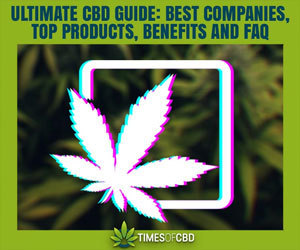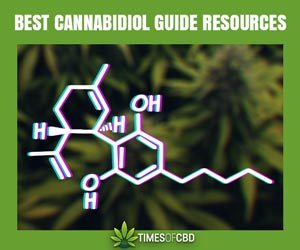CBD News
Hemp Biofuel: Examining the Renewable Energy Game-Changing Potential
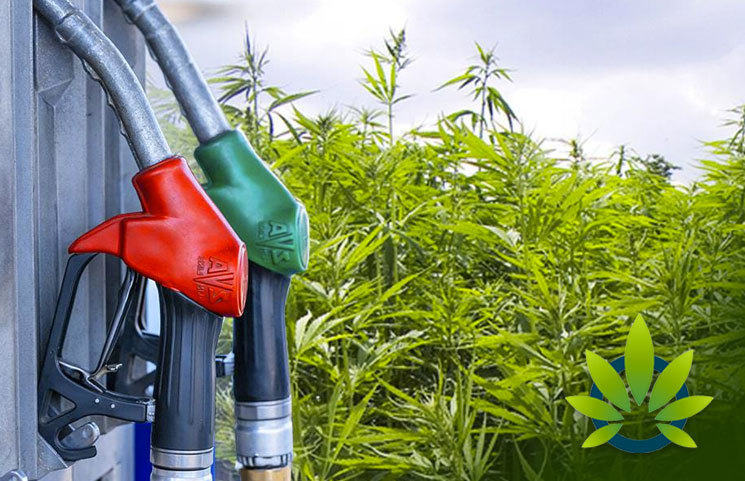
If there represents one of the great existential mountains that we, as a species, must climb and conquer in the 21st century it is the reduction of our current reliance on the damaging use of fossil fuels.
Whether these are coal, natural gas or oil, these are all in a limited and ever-dwindling supply, and considering the fact that this is relative to an ever-increasing demand for energy of any kind across the world. This means that it's becoming a greater possibility that these same fuel sources will run out in the next half century.
The other issue that comes up is the scale of environmental devastation that coincides with the extraction and use of these fossil fuels. Even though, for some, it is a contentious issue. All available evidence categorically shows that climate change is real, and that our vicarious use of oil, gas and coal in increasing quantities have contributed enormously to this current crisis.
While statistics vary, it is believed that, in order to prevent global temperature levels from rising two degrees. Then we would have to leave 65 percent of . all known fossil fuel reserves completely untouched. Which sounds like that a little too much like over-optimism.
So how is it that we can work to soften the blow of moving away from fossil fuels? One of them is the more liberal application of renewable energy. Otherwise referred to as ‘green' energy sources, these solutions have steadily transitioned from being a ‘niche' concept into becoming a necessity and a pretty lucrative market for businesses to dig into.
Is it a solution and industry that is too little, too late? Hardly, we've seen businesses and countries like China investing a lot more into renewable energy sources. Even signing a renewable energy deal with California back in 2018 to expand on them.
Simply put, if countries work towards developing larger-scale renewable fuel sources, it will result in the increased viability of these sources as substitutes to fossil fuels. But also work to significantly decrease the vulnerability of the fuel supplies we currently use, thereby delaying the level of climate change that we are seeing.
Some of the more commonly thought-of renewable sources of energy we think of tend to be hydro-electric, wind and solar. But one of the sources we shouldn't underestimate are BioFuels. Much as the name suggests, these originate from living, organic matter, and have been championed as a serious contender as a solution for the world's feverish demand for energy.
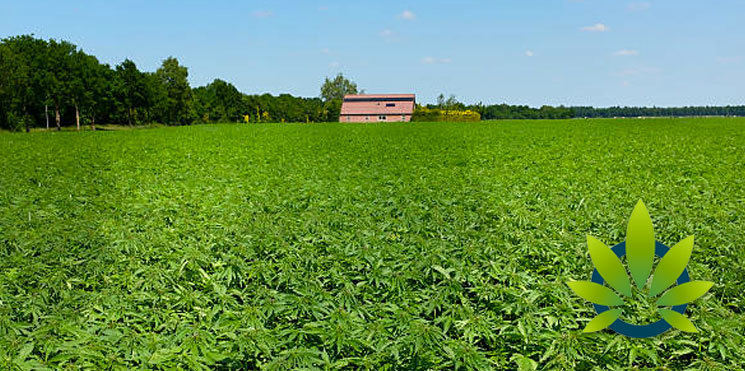
Among these biofuel variations, Hemp stands out, along with having an almost encyclopaedic amount of utility. Hemp is one of the world oldest cultivated plants, with written sources of its use dating back several thousand years. Hemp Biofuel is one of the sources of renewable energy that can seriously be a game-changer for the world, which is what makes the sort of obstructions it experiences all the more confusing and generally frustrating.
[Bio]Fuelling the Renewable Revolution
In some way and scale, biofuels have been around for longer than there have been any kind of automobile. So what is it that allowed for these biofuels to suddenly go from historic institution to relatively unknown? The advent of inexpensive diesel and petrol from oil.
Once a more efficient, cost-effective solution rears its head, it stands to reason that people will be picking the one that leaves to smallest dent in their wallets. As a result of this, fossil fuels skyrocketed while biofuels were cast into relative obscurity.
It's only with these past few decades that we've seen oil and diesel prices hit major peaks and troughs, along with the increasingly crucial need to address climate change, now we see biofuels being taken out of the obscure cupboard and into the public spotlight once again.
Biofuel isn't something that needs to be leveraged in all areas of society to make a difference. If it were to replace transportation, for example, that would make a profound difference on its own. According to more recent research, flights, shipping and road travel contribute to more than 25 percent of total greenhouse gas emissions.
So while this is something that makes for a great idea in theory. The problem is that it's hit a large number of roadblocks in actually taking it from theory to practice. It's because of this same intransigence that we, as a species, would need to increase the current output of biofuel in order to match the global sustainable growth figures set by the International Energy Agency (IEA) by 2030.
How much by? According to research, it would need to increase three-fold.
Biofuel itself is divided up into two distinct types:
- Bioethanol – This is an alcohol made through the fermentation of the carbohydrates (polysaccharides) or sugar crops, these include sugar cane and corn. Both of which are abundant.
- Biodiesel – This is created through the transesterification of fats and oils. While this is a biofuel development process that is most popular in regions like the United States and Brazil, it's also a process that is commonly used in Europe.

To suggest that Biofuel production would have to go from a crawl to a sprint relatively quickly would also be pretty inaccurate, it's already been doubling over the last couple of years. This is as of statistics from 2018, which reported that global biofuel production officially hit 40 billion US Gallos, which is an increase of 7 percent compared with last year.
So how much of a ‘sprint' would biofuel production need to go through to meet this global demand by 2030? It would need to hit 10 percent annually between now and 2030, while it currently is forecasted at 3 percent per year so far.
The application of biofuel in transportation isn't a new one, either, which takes away some of the reasoning behind blocking it. During the time that Henry Ford was launching the Model T in the early 20th Century, he looked at running them on hemp-based biofuel. Meanwhile, the creator of the diesel engine – Rudolf Diesel – actually sought to have it run on peanut oil.
The reason that there is a history of applying biofuel is because it was actually put to considerable use during the industrial revolution, all before being replaced by fossil fuels with the discovery of oil in the 1900s. With the introduction of these fuel sources, the world cultivated a massive demand for it. Over the 20th century, global oil consumption increased five-fold from 1945 to 1970.
This increasing demand is not stopping anytime soon, and means that governments all over the world are forced to really take a look at biofuel as a credible solution and alternative in the 21st century.
Governments like the United States have been making some progress, at the very least. These are demonstrated by the passing of the U.S. Renewable Fuel Standard during 2005, and the Energy Independence and Security Act two years later. These forced the nation's transportation industry to seriously consider and make arrangements to adopt biofuels on a larger scale.
Sounds good so far, right? Well not exactly. It was later announced that biofuels were causing more harm than good to the world. Why? Because the crops that were being used in the processes were not as environmentally friendly as previously believed. Back in 2017 . as well, it was decided by the United States government that corn, milo and soybeans were among the only crops that could be considered economically viable for large scale biofuel production. Losing precious time as a result.

Among these crops previously mentioned was corn, and the byproduct that it creates, which is corn ethanol, was the subject to a lot of hype. And it's understandable considering the fact that an estimated 40 percent of US' annual yield of corn is converted into biofuel. This is in spite of the fact that it's no longer considered a serious alternative to conventional fuel, and a potential solution to the climate change issue.
What makes this all the more strange is that we're only now looking at the ‘super-plant' hemp as a potential biofuel solution.
Hemp as a Biofuel – How can it Work?
Among some of the uses for hemp, biofuel is just one of them. Hemp was a pretty popular commodity all across the world for millennia. Along with being a fuel source, canvas material, among other things, it was also used for ropes and rigging. ‘Old Ironsides' herself, the USS Constitution was held together with more than 120,000 pounds of hemp.
Back in the mid-19th century, some of the first organic biofuels were introduced to the world. This being the work of a duo of chemists who managed to conduct the first successful process of transesterification. Flash forward by forty years and Diesel's prime engine was not running on diesel fuel at all, but operated off its own power. Another 7 years forward, and it successfully received the highest award during the 1900 Paris Exhibition with the revealing of his own engine which could run on peanut oil.
So the 1850's onwards to the 1900s were the veritable golden age for renewables, but this was set to change with the passage of bills like the 1937 Marijuana Tax act in order to clamp down on its use as a drug. This was followed up by a resolution passed by the United Nations which banned its cultivation in 1961.
With these acts, fossil fuels had managed to remove a massive rival from the field and allowed them to corner the market in energy supply.
One of the first federal organs to walk back from this policy of outright illegalization was the European Union. Which officially revoked its policy of prohibition on hemp cultivation back in the 1990s. Thanks to this decision, several countries in the EU began to cultivate it again. And over the last couple of decades, hemp has successfully grown as a popular source of fibre, and a highly popular market in the field of food and cosmetics.
The United States decided to reverse only last year, with the Farm Bill of 2018, which legalized the cultivation of hemp of industrial purposes. And it's hoped that with this, we can hopefully see it gain momentum as a biofuel.
While this is certainly a positive step, we are missing a fundamental trick that makes it unique as a biofuel. It's actually very possible to create both biodiesel and bioethanol from it. For biodiesel, you press hemp seeds in order to extract fats and oils. Once that has been done, these same fats and oils are then put through a number of additional steps in order to create a biofuel iteration that you can use in your car.
An added plus of this is the fact that hemp biodiesel can then be stored and transported in the exact same way as ordinary diesel.
Here are some more interesting things to know about biodiesel:
- Biodiesel is the only kind of fuel alternative out there that is able to run in an unmodified diesel engine.
- Biodiesel is actually far less toxic than salt, ten times less toxic, in fact. Along with this, it has a flashpoint of 300 degrees Fahrenheit. This makes it far more safe than regular diesel fuel which has a comparable flashpoint of 125 degrees.
- Since policies of prohibition of hemp cultivation were reversed in the 90's, biodiesel has actually been used throughout that time, along with being used in order to fuel cars for up to 30 million road miles within the United States.
- It contains no sulfur and is 11% oxygen by weight.

Traditionally speaking, there are wheat-based crops are commonly used in order to make ethanol. More commonly, these consist of barley and corn as the most economically accessible. Even though this is the case, there are other processes of fermentation that are available that would allow for hemp to be processed and become ethanol.
Through the use of hemp as opposed to conventional food crops as a fuel source, this would provide a much-needed boost to the efficiency of food production. Hemp has the added advantage of being durable enough to grow in more regions and in lower quality conditions. This gives it a significant advantage over wheat, barley and corn because of this. in addition, hemp bioethanol has the same kind of advantages for transportation as biodiesel does.
The Energy Potential for Hemp-Based Biofuel
A significant amount of other sources for biofuel have since been cast aside due to one fact or a number of them. These consist of low energy potential relative to the processing, the high level of cost in comparison to the yield, along with the damage longer-term that it can cause to the local land and environment.
Hemp, by contrast, offers a range of advantages over its rivals, and carries a rapid reap, sow and cultivation timeline of just four months.
The environmental benefits that hemp can offer are very well known. Considering as well the fact that it is a pretty durable and tough plant which also attracts very few natural pests. This means that the cost of upkeep and need for pesticide are reduced signficiantly. Hemp also has a very high resistance to external and fungal diseases. It's made even more interesting considering the fact that it actually has the potential to outgrow weeds.
Going back to the fact that Hemp is such a durable plant means that it can be made to grow in otherwise infertile soil. What this allows for is a clear division between fertile land, which can be easily set aside for food crops, while hemp is grown on the more arid land.
Along with this, it doesn't need a whole lot in the way of fertilizers or water to grow. If we take a look at some of the climatic zones that hemp can be cultivated in reveals that it can easily survive all across the Americas, along with the vast majority of Europe, Southern and South Eastern Asia, Australia as well as the majority of Africa outside of the Sahara.
So what would these hectares of hemp provide in the way of biofuel. According to the more recent research out there, the annual fuel yield that one hectare can provide is more than 207 gallons. This is a volume that is just below Oil Palm and Coconut crops, but more than four times the yield we could possibly get from soybeans. The . latter of which is commonly used as a biofuel source.
According to a further study which was conducted by Prade et al. back in July 2011, the team found that the overall biomass of hemp, specifically its energy yield was more than double that that was produced by wheat straw as a solid fuel. Hemp pellets offer a very significant example of solid biofuel.
One of the other significant attributes of hemp biodiesel, in particular, is the fact that it's not only a more effective replacement for diesel, but that it's a completely carbon neutral version. During its life span, it actually ingests carbon dioxide at a much higher rate than trees do.
If we were to burn hemp, any CO2 emissions that would be produced as a consequence would be easily re-absorbed via photosynthesis. Considering the fact that it has a short life cycle of four months means that it can be used to support crop rotation and soil. All in order to benefit winter crops.
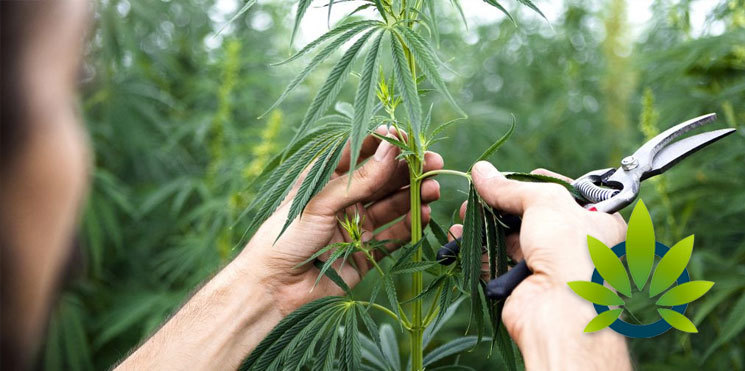
Palm oil has, for some time, been considered to be a commonly produced form of biodiesel due to the fact that it's a relatively cheap source to produce and has a relatively high yield compared to other crops. A single hectare of palm oil can produce more than 500 gallons, which is more than 150 percent of the yield obtained from hemp.
The issue is that it's responsible for the production of large amounts of CO2, and is directly associated with the destruction of rainforests and its wildlife.
Back in 2012, it was reported by the Natural Climate Change Journal that the expansion of plantations for palm oil could bring in more than 550 million metric tons of CO2 by 2020 alone.
If we compare this to metrics published in 2010, when a single land clearing exercise in order to establish palm oil plantations, it served to emit more than 140 million metric tons of CO2. To put that into perspective, that is the equivalent of emissions coming from 28 million vehicles.
Putting Hemp Biofuel on the Road – What's the Hold-up?
Hopefully, there won't be much more of a holdup in leveraging it as a fuel source. Governments have spent a considerable amount of time associating the cultivation of these biofuel capable crops with bad practices despire being a drop in the ocean compared with our current use of fossil fuels.
Even today, there is a fermenting anti-renewables sentiment in regions like the United States. One of the more likely reasons for why places like the US take this approach is because there is a genuine fear that introducing renewables to the table will eat away at the kind of hegemony that fossil fuels have.
Even with our steadily changing approach towards biofuels, there is still a lot of misinformation that's being circulated against them, along with hemp. One of the examples of this is that ethanol production threatens the waterways as nutrients from farming seeping into lakes. One of the other falsities that emerge is that ethanol increases food prices, even though the cultivation of hemp would mean an increase in corn yield for food consumption.
There is still a lot of work that will need to go towards educating the general public as to the kind of energy benefits that come with using hemp. One of these attempts includes a study published by the University of Connecticut back in 2010. Which found that the volume of hemp biodiesel produced by its graduate students had an impressive 97 percent conversion efficiency.
The university professor who led this study, Professor Richard Parnas is someone who is already working on growing hemp in order to produce enough fuel to power his own farm with the oil that's extracted from the seeds. Professor Parnas went on to point out within this study that the industry already exists, and that it wouldn't take much in the way of additional investment in order to create a dynamic biodiesel industry.
Hemp seeds are one of the more viable solutions out there for the cultivation of biofuel. Along with producing a high annual yield of fuel while also having a relatively short growth cycle compared to other crops. In addition, and compared to its counterparts, it can grow in infertile soil conditions, while also being very resistant to various kinds of pests and diseases.
Biodiesel made through the processing of hemp already meets current requirements such as clean air regulations and provides a far better environmental and economic option than other biofuel crops out there.
While these same crops have actually been legal in a growing number of nations worldwide for roughly a generation now, one of the countries that stands out as the most important for cultivating this would be the United States. The end of hemp prohibition in the USA could serve as the catalyst for a brand new fuel revolution with hemp serving as the front-runner.



